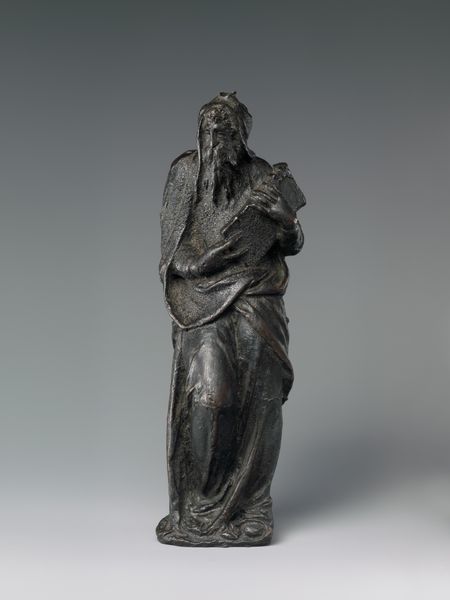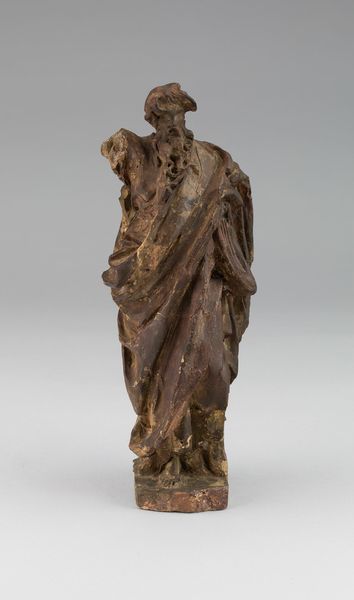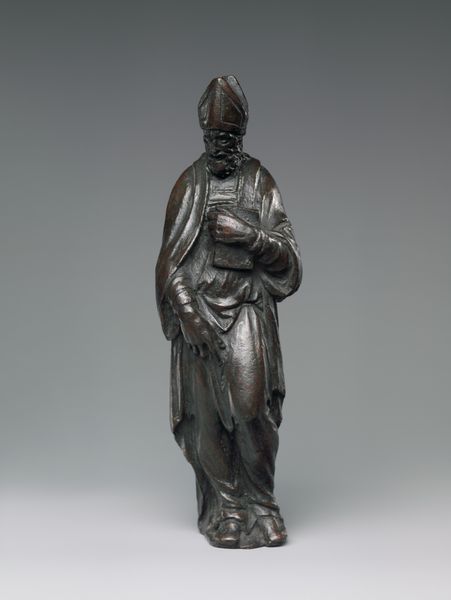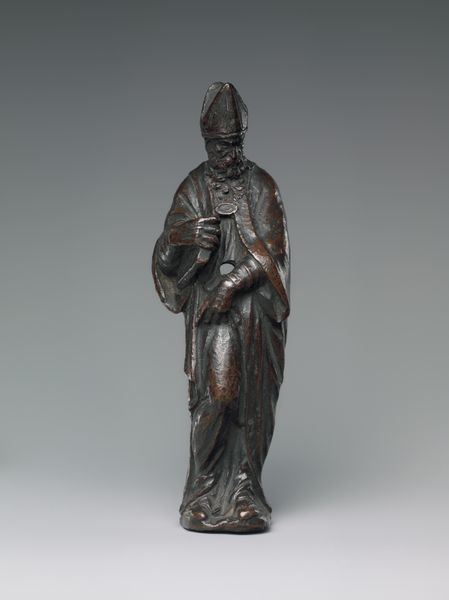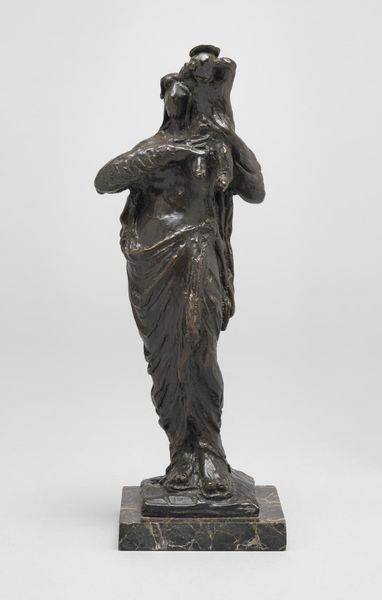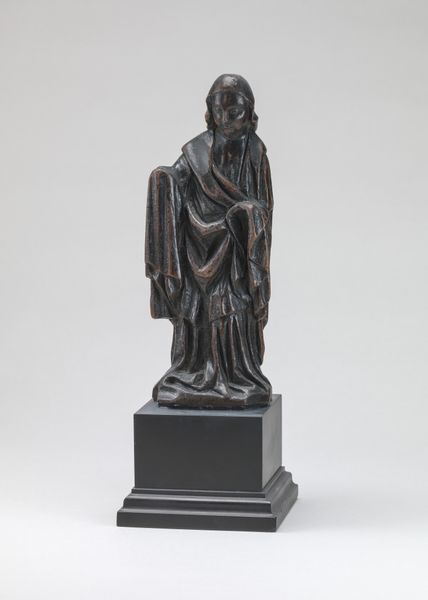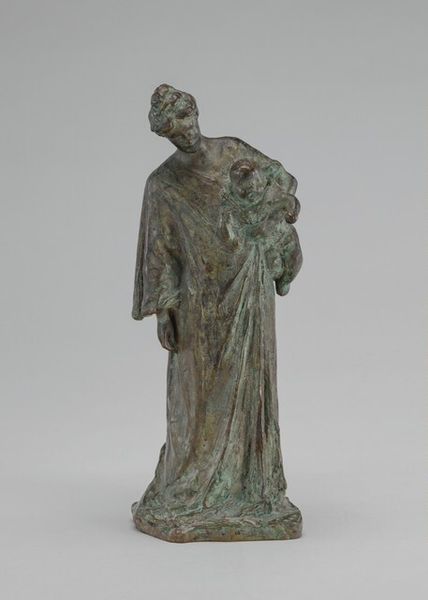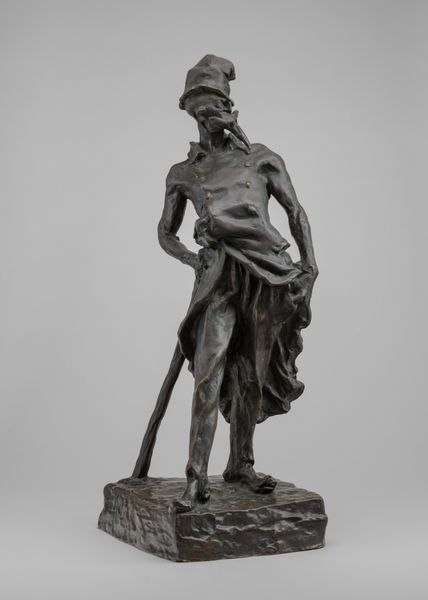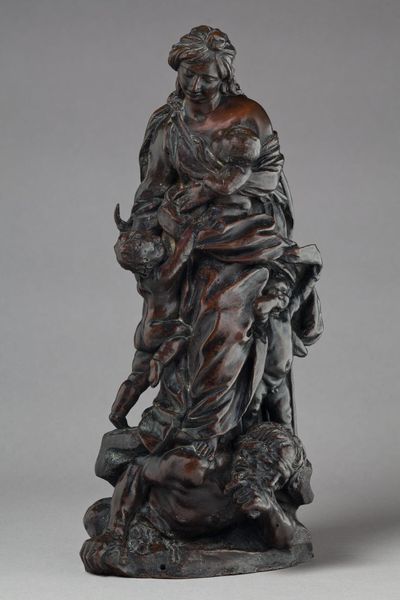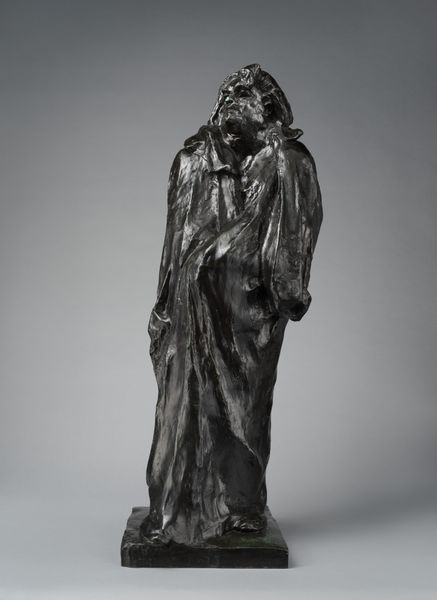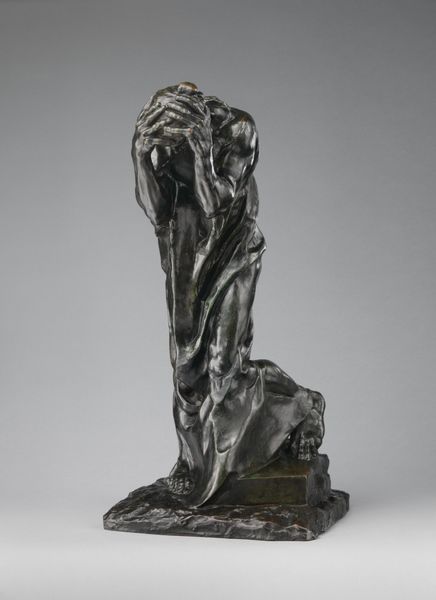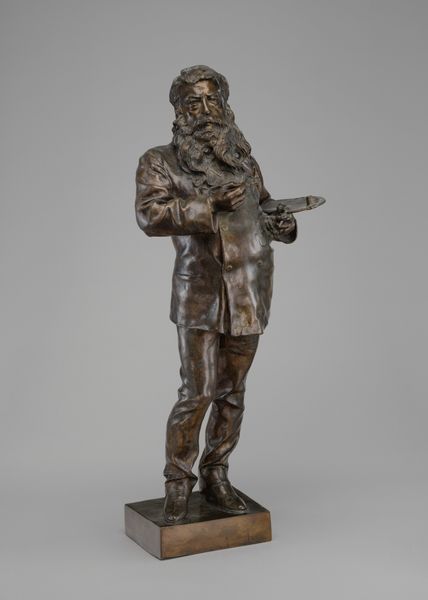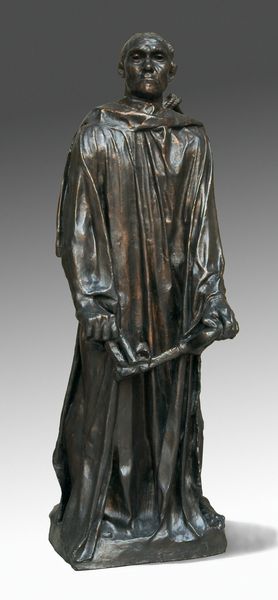
bronze, sculpture
#
portrait
#
medieval
#
sculpture
#
bronze
#
figuration
#
sculpture
Copyright: Rijks Museum: Open Domain
Editor: We’re looking at *Johannes de Doper*, or *John the Baptist*, a bronze sculpture made before 1908, possibly medieval. He looks so worn, but somehow determined, holding what looks like animal fur. What do you see in this piece? Curator: The raw intensity is immediately striking. This bronze John embodies the ascetic prophet, bridging the Old and New Testaments. Note how the artist used bronze, not just for its durability but its alchemical significance. It suggests transformation. Editor: Transformation? Curator: Precisely! Consider the wilderness as a place of trial, John’s animal skins hinting at a return to primal nature. He emerges purified, his gaze resolute, preparing the way. Doesn’t his pose itself symbolize a moment of transition, his weight slightly shifted? Editor: That’s a great point. He’s not just standing there; he’s caught in this moment right before...something big. I like how you link that with bronze as a material as if it’s more than just the sculptor’s medium. Curator: Think of baptism, both literal cleansing and symbolic rebirth. Is the artist hinting that a whole new dispensation will come through him? How do you react to John’s isolation as it is displayed today? Editor: Alone like this, in the gallery space, he feels even more poignant. Stripped of his historical context, his message about radical change still rings true, somehow. Curator: Indeed, symbols are potent vessels across centuries! Editor: I hadn’t considered how the material itself adds to the iconography, like it becomes part of the message. Curator: Seeing through symbolic lenses lets us connect with deeper cultural undercurrents, making the art more relevant today!
Comments
No comments
Be the first to comment and join the conversation on the ultimate creative platform.
